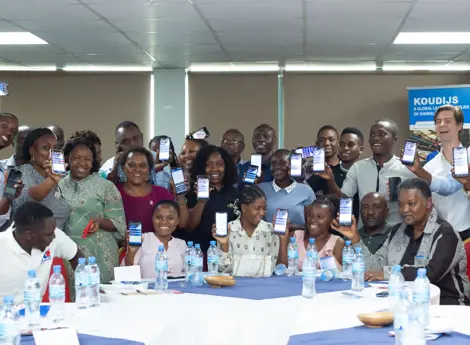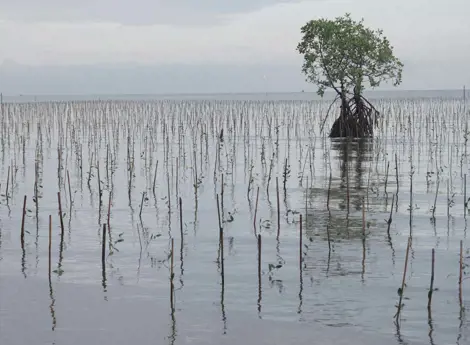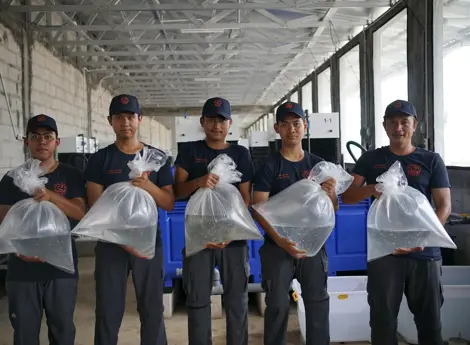Pioneering aquaculture research on the banks of the Mekong river
One of the biggest challenges in aquafeed production today is understanding the precise nutritional requirements for different species of farmed fish and shrimp. That is why the global research centre on the banks of the Mekong river in Vietnam is gathering important data that will shed light on the efficient conversion of feed into animal protein. By optimising the impact of aquafeed, farmers around the world can raise healthier fish and shrimp with less feed costs.
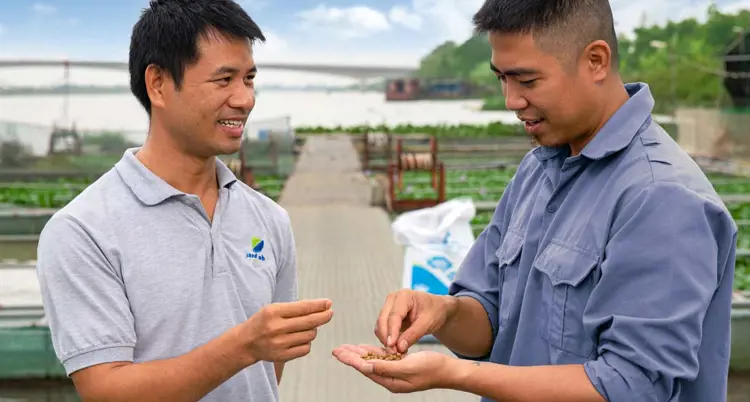
Compared to livestock farming, relatively little is known about the role of feed and feeding practices in aquaculture. In 2017, this lack of knowledge presented De Heus with a challenge, but also an opportunity to better understand feed digestion. “Because we couldn’t only rely on previous academic insights, we did the majority of the research in house,” says Jesper Clausen, Nutritional Support Director for De Heus in Vietnam. “By doing it ourselves, we create a competitive advantage. We can validate what farmers expect from our products and give them confidence in the growth of their business.” The research is so novel, it is generating interest from the academic world, as well as from some of our main suppliers. “In fact, we collaborate with both Dutch and other universities. This means we can share insights with them as well.”
The location of the R&D centre is strategically chosen: the Mekong waters have a quality and composition similar to the warm water aquaculture markets where the feed solutions of De Heus are used. “This enables us to carry out experiments in near-market conditions and follow up on these experiments with trials in the actual market. We mainly work with warm water species, so keeping our research close to the situation of our local customers is very beneficial.” Because the research in Vietnam involves different species, the results can be applied to aquaculture systems around the world.
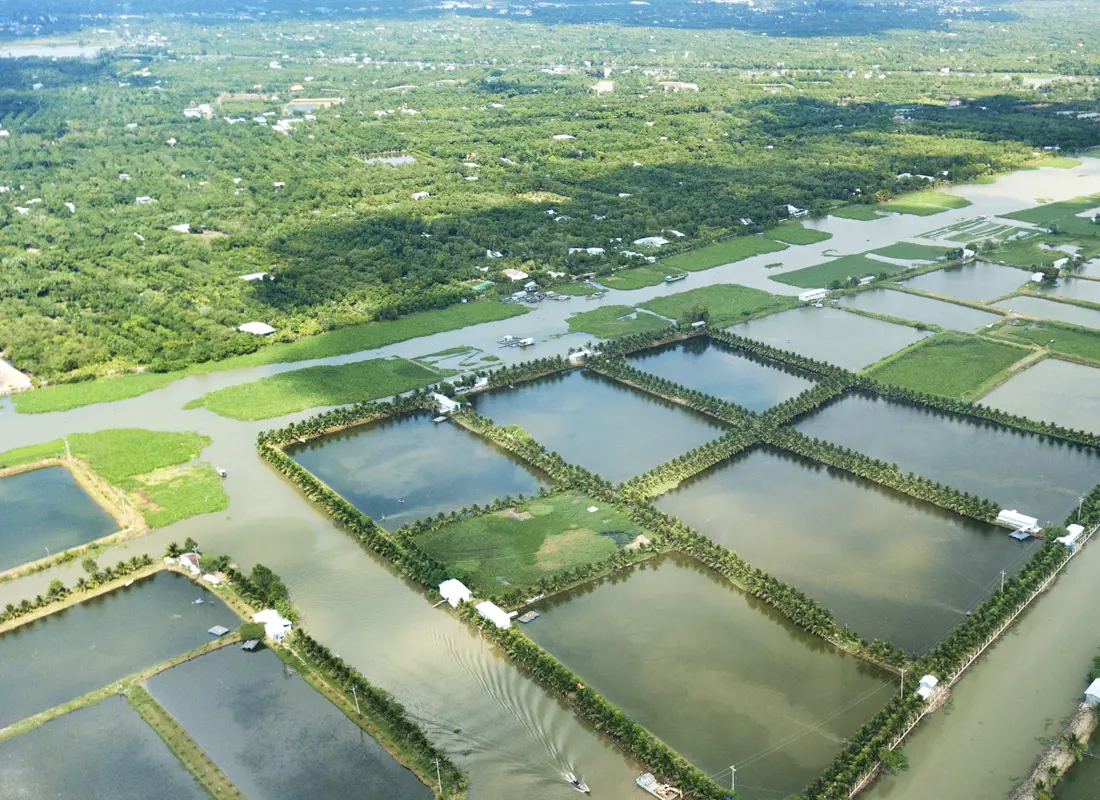
Less resources, better yield, happier farmers
The bulk of the research at the R&D facility focuses on the digestion of raw materials by various species of fish. “By looking at the digestion of raw materials, we know exactly what the fish need to stay healthy and grow properly. We look for ways to produce the best possible feed using as few resources as possible. The raw materials we do use must therefore be of excellent quality and have a high nutritional value,” says Clausen.
The benefit of good feed can be seen in the feed conversion rate (FCR). A lower value means farmers can raise more fish with the same amount of feed. “We can see the improvements so clearly at farm level – going from 1.5 to 1.2 kg of feed per kg fish raised, really has an impact on the farmer’s livelihood,” Clausen beams. “I get excited when I talk to farmers and they want to have a drink with me because their yield was so good.” Moreover, increasing efficiency across the board not only results in a cost reduction for farmers, but a lower CO2 footprint through the value chain.
Finding new possibilities
Clausen continues: “Better understanding of nutrient digestion makes it easier to provide our farmers with better feed, whilst increasingly using responsibly sourced ingredients to reduce our environmental impact.” To reduce the overall impact of aquafeed, the research centre is experimenting with alternative ingredients to for example soy bean meal and fish meal. “Soybean meal is such an important ingredient for aquaculture feed, and when the price goes up, it can really impact our margins in a negative direction. so it can really give us a headache,” Clausen points out. Still, Clausen says using more locally sourced nutrients will be critical in the future. And he is convinced that the opportunities are there. “When we look at local solutions here in Viet nam, we’re situated in a rice producing nation.
That means there might be opportunities for us to use waste streams from rice production, such as rice hulls and deoiled rice brans. It might be a good replacement for soy, but we are still in the early stages of our research.”
There are sustainable solutions in other areas as well. “The solution which I personally find the most promising is insects,” Clausen says excitedly. While the insect sector must solve issues around scalability and cost, it does offer several advantages. Insects are a very sustainable source; they upcycle low value waste. The quality of insect-based feed is very consistent, and it is relatively easy to produce. Moreover, it is a natural part of the diet for many fish which means they eat it faster.
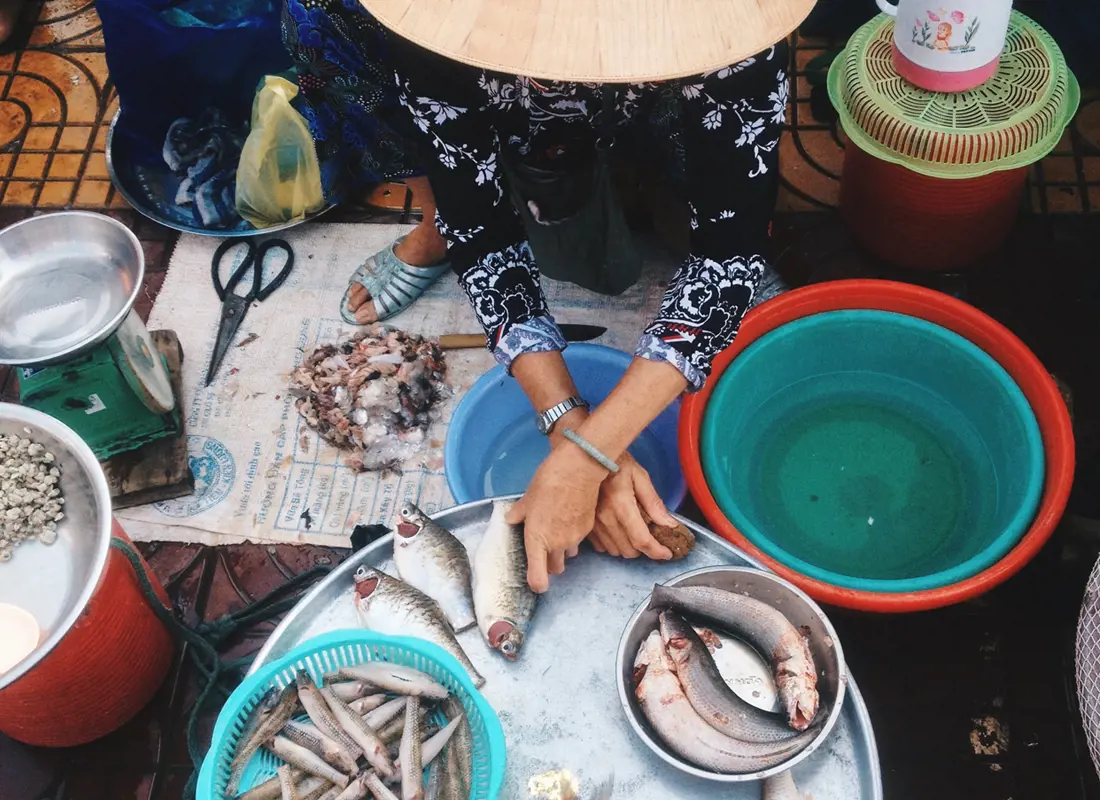
Healthy fish - a matter of prevention and practical knowledge
As water quality management is one of the most important factors for animal health, it is crucial to understand how the ingredients used in feed affect how fish digest materials. In addition, proper feeding practice is essential for controlling water quality. As Clausen points out, overfeeding often results in excess feed material building up in the water, causing high ammonia levels that are toxic to the fish.
When fish and shrimp start to show symptoms of disease, farmers sometimes use antibiotics to stop the outbreaks. “So if we provide them with good feed and help them with water management, we can also reduce antibiotic use in the sector,” says Clausen.
Moreover, feeding can be used preventively. ”If you know that the fish are about to go through a period of stress e.g. under cold or hot weather, during transport from nursery to grow-out, you can provide nutrients and immune boosting supplements that help get their immune systems going. That way, they can stay healthy until the stressful period is over and reduce the potential mortality of the fish and shrimp.” Such complexities with respect to fish health are why De Heus has established Aquaculture Application Centres for its main markets. Farmers can attend meetings at these centres to receive training on proper feeding practices and aquaculture hygiene. “Listening to a 50 slide PowerPoint presentation is hard enough for an office worker, let alone a farmer. You’d put them straight to sleep,” Clausen says jokingly. “So, it’s nicer and more effective if we can bring smaller groups of key farmers to the application centre and give them ideas on new technologies, like water treatment or feeding practices.”
FEED. Magazine
In this magazine, we share a selection of stories about progress and sustainability from De Heus business units all over the world. We hope that these stories will inspire you




